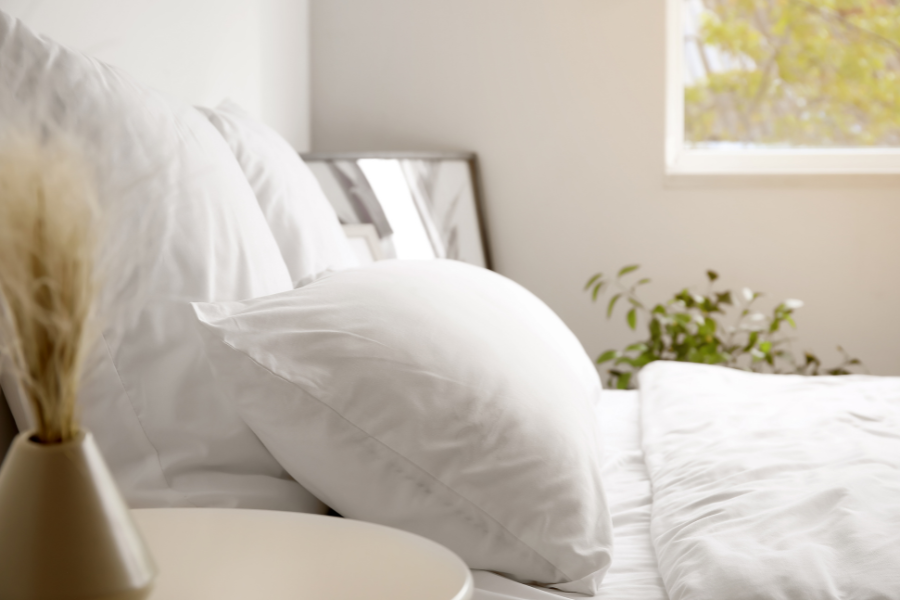When striving for radiant, healthy skin, most people focus on skincare products, hydration, and diet. However, one overlooked factor is your pillow material. The fabric and filling of your pillow, which spend hours in contact with your skin each night, can significantly influence your skin's condition. This article dives into how pillow materials impact skin health and provides actionable tips for choosing the right pillow for your needs.
Why Pillow Material Matters for Your Skin
Your pillowcase and pillow filling are in prolonged contact with your skin every night. This interaction can either benefit or harm your skin, depending on the materials used. Here’s why:
- Friction and Irritation: Rough or non-smooth fabrics can increase friction, causing irritation and disrupting the natural skin barrier.
- Moisture Absorption: Materials like cotton can absorb your skin's natural oils and hydration, potentially leading to dryness.
- Allergen Accumulation: Non-hypoallergenic materials can harbor dust mites and allergens, triggering inflammation or acne breakouts.
- Breathability: Poorly breathable materials can trap heat and sweat, clogging pores and causing breakouts.
How Different Pillow Materials Affect Your Skin

1. Cotton
Cotton is a common choice due to its affordability and softness. However, it absorbs skin’s natural moisture and oils, potentially leading to dryness. While it is breathable, it might not be the best option for sensitive or acne-prone skin.
2. Silk and Satin
Silk and satin pillowcases are known for their smooth texture, which minimizes friction and helps prevent wrinkles and skin irritation. They are also less absorbent, helping to retain your skin’s natural hydration and enhancing the effects of nighttime skincare products.
3. Microfiber
Lightweight and soft, microfiber pillowcases can feel cozy. However, they tend to trap heat and may not be as breathable as natural materials, making them less ideal for oily or acne-prone skin.
4. Goose Down
Luxurious and breathable, goose down pillows provide excellent support and temperature regulation. With proper treatment, the natural filling is hypoallergenic, making it a great choice for sensitive skin.
5. Memory Foam
Memory foam pillows offer strong support but may lack breathability, trapping heat and moisture. This can be problematic for individuals with oily or acne-prone skin.
Quick Tips for Choosing Skin-Friendly Pillows
Here are some practical tips to ensure your pillow supports your skin health:
- Opt for Hypoallergenic Materials: Look for hypoallergenic pillows to reduce exposure to allergens and irritants.
- Prioritize Breathability: Choose pillows with good airflow to keep your skin cool and dry throughout the night.
- Invest in Silk Pillowcases: If you’re prone to wrinkles or have sensitive skin, switching to a silk or satin pillowcase can make a significant difference.
- Wash Regularly: Keep pillowcases and pillows clean to remove dirt, oils, and bacteria that can cause breakouts.
- Consider Your Sleep Position: Your pillow's height and firmness should align with your sleeping position to prevent pressure on your face.
Fun Fact: Your Pillow Can Complement Your Skincare Routine
Did you know that the right pillow material can amplify your nighttime skincare products’ effectiveness? Silk and satin pillowcases are particularly beneficial as they don’t absorb serums or creams, keeping them on your skin where they belong.
Why We Recommend Silk and Goose Down
At DownyHaven, we believe in combining comfort and care. Our silk pillowcases and goose down pillows are designed to provide the perfect balance of support and softness while protecting your skin. Goose down pillows are naturally breathable and hypoallergenic, ensuring a cooler, healthier sleep environment.



